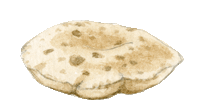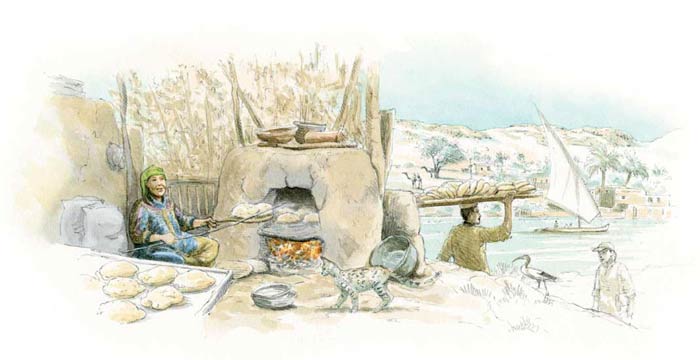Shamsi or sun bread

Form: Large round ball, 10 to 12 cm in diameter
Country of origin: Egypt
What distinguishes it from other methods of bread making: It is etched on the sides, so as to make it shaped like the sun (sham means “sun” in Arabic)
Category of bread: (3) Belongs to family of crusty risen breads
Particularity: It is left to rise in the sun
Ingredients: Wheat flour; leaven that comes from previous batch; possibly addition of yeast; salt; water

Egypt
Egyptians invented bread. If it wasn’t them who invented it, they have certainly brought it to the level of an art since unrivalled. No matter how much invention there has been in the field, bread making never stopped searching for new ideas; without running a risk, it could never stray too far from these simple movements, the experienced movements of Egyptian women who kneaded wheat flour using water from the Nile. This is how shamsi has always been made, and is still made today, in the region of Aswan in Upper Egypt, which gives us an idea of how this bread is stopped in time.
The Egyptian people have worshipped the sun as if it was a god for several millennia, and shamsi bread has the same kind of relationship with the sun. This bread was initially wheat flour dough sprinkled with leaven, then the women “abandoned” it to the rays of the sun god Ra, which the Ancient Egyptians represented as a falcon’s head mounted on a solar disc. It lay in the sun until it took shape. There was no hurry. Everything happened when it happened. That is perhaps the secret of all fermentation: like the sun, as soon as it appears, it “recreates” the world. It is the bread that rises, marking a new beginning and promise for the future.
Another identification with the sun comes from its bursting ball shape. Just before putting it in the oven, it is pricked on the sides so as to evacuate any extra gas at the time of cooking. The shamsi dome is thus saved, and it is the sides that suffer, thus giving it its sun shape, distributing its benefits like shafts of light.

